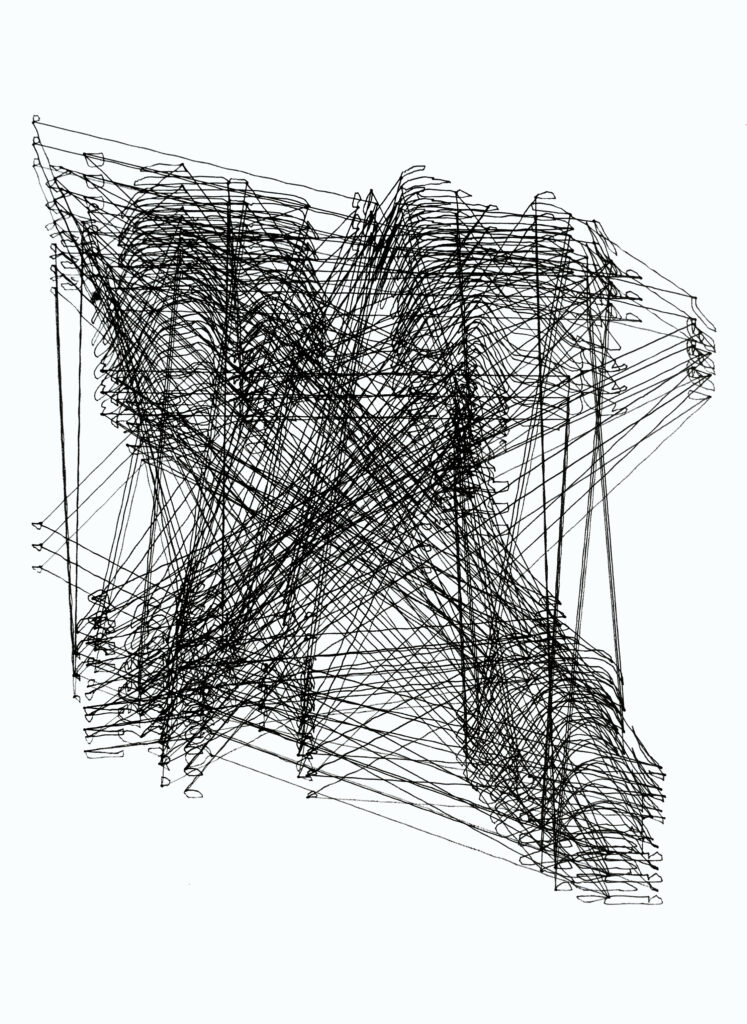“I nearly forgot what mum said to me.”
“Most of the time I don’t follow what she said.”
“Maybe she’s right, but I have to make my own mistakes.” Every time you recall a memory, it gets further from the truth: mistrust and self- doubt distort the traces that are left from every past encounter, coloring your approach to every new person you meet.
Inspired by its experience of hospitality in Jogjakarta, the group started to examine how the relationship of host and guest unfolds. How much are you willing to give to or take from the people you encounter? How do you perceive each other, and how do these perceptions evolve over time?
These questions lead to the creation of a performance based on actions related to the context of meetings. Somewhere between theater and dance, a repertoire of movements is collected from interpersonal experiences, and stitched together into a choreography involving all three members of the group. This forms the core of the project, a new meeting happening twice each evening of the exhibition. Taking place in the cafe where so many new people were met during the last few months, a setting is created to enhance the performative elements of the piece. In conversation with the present, a further layer of memory of the past is added in the form of an installation. A security camera serves to record and examine each encounter, and, each evening, a monitor continuously plays back a highlight reel of the previous night. Additionally, after each representation, the footage is interpreted by an algorithm, extracting the movement of the performers and abstracting it into a drawing, which is mechanically drawn in parallel to the next edition of the performance. In this way, new meetings and memories of past encounters intermingle and influence each other over and over.
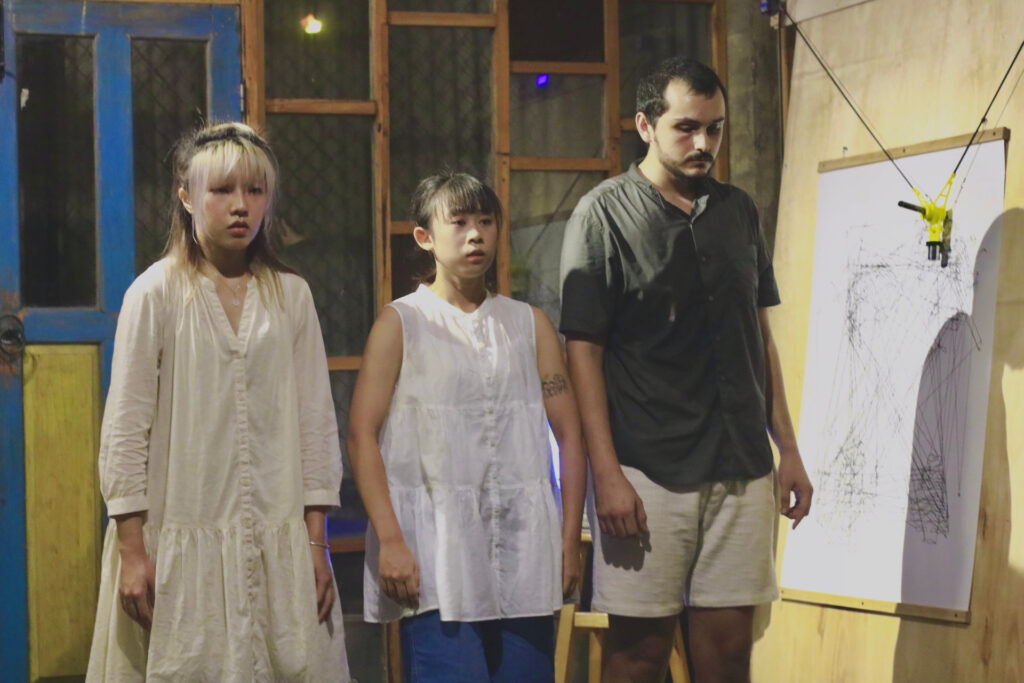
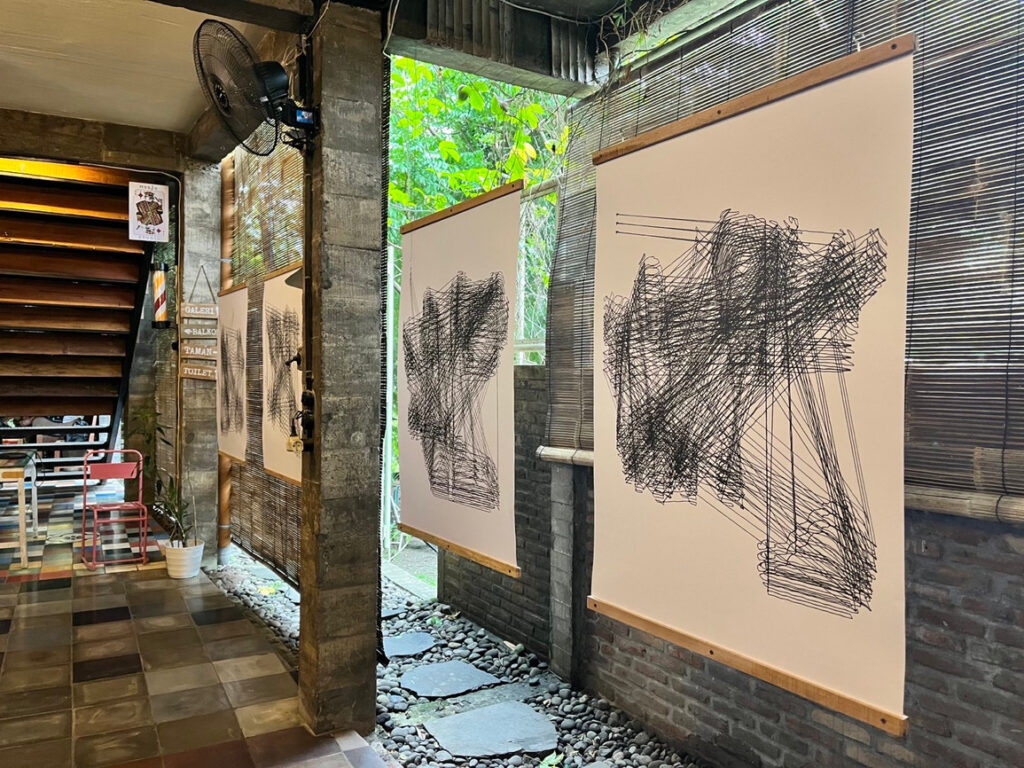
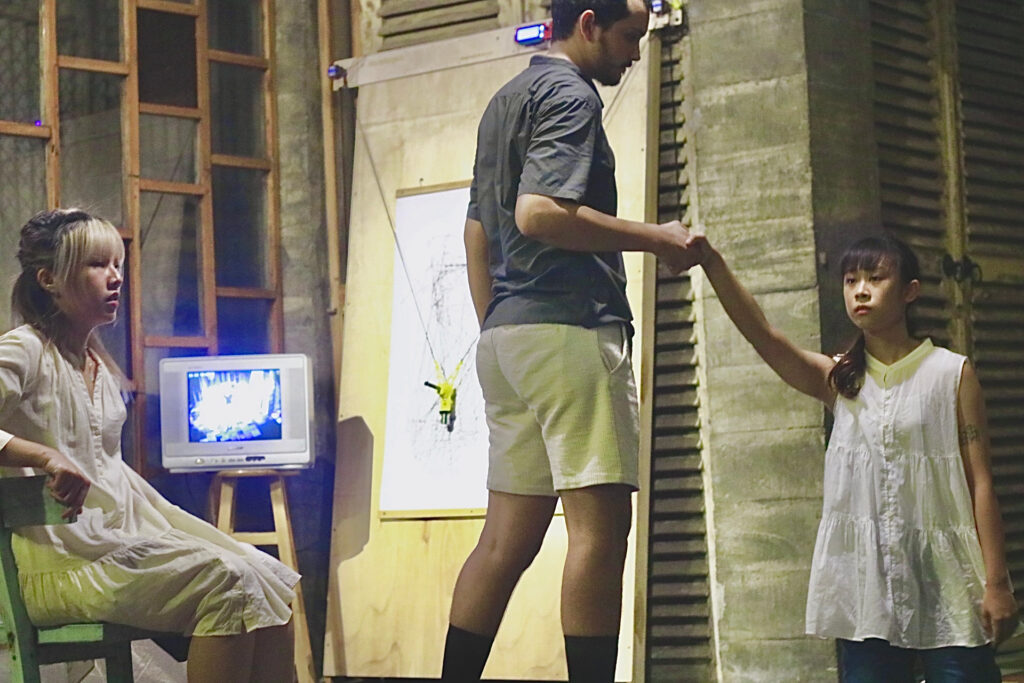
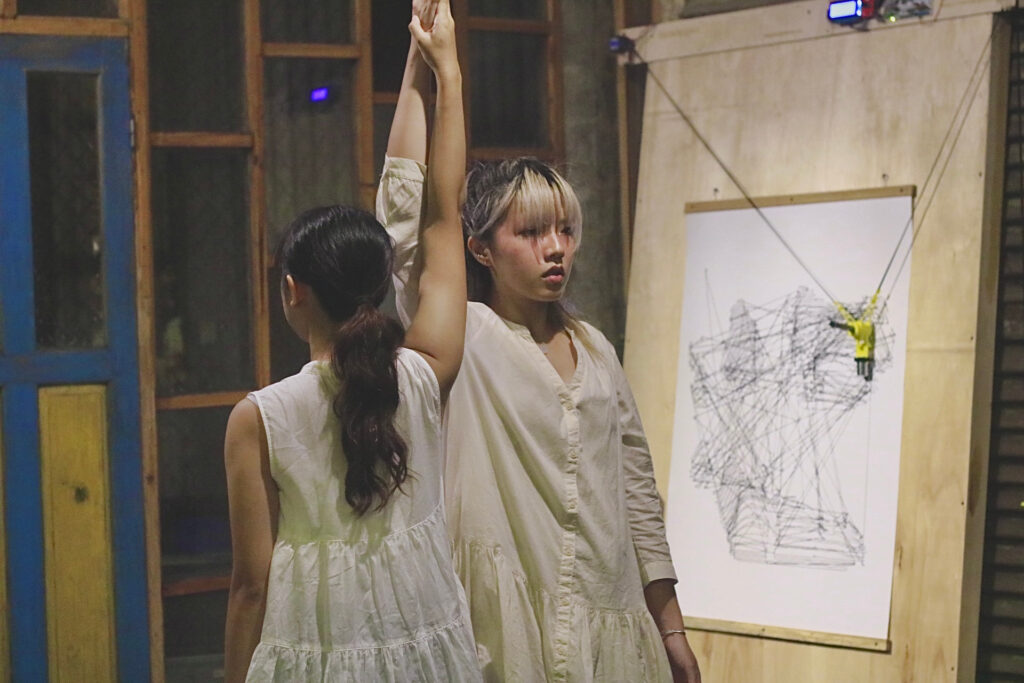
The project started with a reflection on hospitality, as the group experienced it in Jogjakarta. While at first, a somewhat naive stance of thinking everyone was constantly welcoming with open arms and not expecting anything in return was taken, this illusion was quickly shattered when what was thought to be a friendly visit turned into a business negotiation. This experience brought much needed nuance to the work, and pushed towards exploring the give and take of every human encounter.
In a first step, the focus was set on the performative aspects of the piece. To gather a repertoire of actions, improvisational theater and dance exercises were helpful to transform lived experiences into more and more abstract movements. Free writing exercises were also useful to bring these events to the surface. Hand-shaking came as a first possible way forward, soon joined by bowing and waving among others. From these elements, a choreography was developed over time, gaining more and more definition and giving a framework to what remained of improvisation.
In parallel to this development, further layers were added conceptually as well as physically to the setting of the artwork. Ideas about the relationship between present and past experiences started being formulated, and solutions were researched to give this a material form. If the performance symbolized a present encounter, then an installation where the event would take place could represent the memory of past meetings, and these elements would therefor influence each other. A security camera and monitor were chosen for their purpose of recording and examining past events meticulously and objectively, tracing the actions and reactions of each individual. Based on this footage, a more abstract interpretation could be produced by a polar plotter. Consequently, an algorithm was developed to interpret the movement of the performers and the audience, and a visual expression that would connect with the setting was created.
